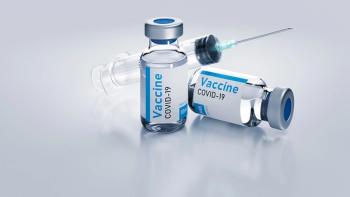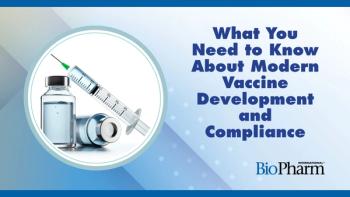
- BioPharm International-11-02-2010
- Volume 2010 Supplement
- Issue 9
Regulatory Expectations and Consensus Industry Recommendations for Extractables Testing of Single-Use Process Equipment
BPSA eases confusion over extractables and leachables testing through guides.
Abstract
The demand for single-use bioprocess systems in biotech and pharmaceutical manufacturing has expanded significantly over the past few years. Applications for single-use systems in biomanufacturing range from upstream media preparation single-use bioreactors, buffer preparation, and intermediate processing, to storage of active pharmaceutical ingredients (APIs), bulk formulations, and filling of final dosage containers. Despite their increased acceptance and implementation, a primary concern with single-use disposable polymeric equipment continues to be that of extractables and leachables. In contrast with final dosage container and closure systems, the absence of specific regulatory guidance for process equipment extractables and leachables has many drug manufacturers unsure of what data must be submitted.
In response to the interest in single-use disposable manufacturing and to address the challenges of associated problems affecting the industry, the Bio-Process Systems Alliance (BPSA), the single-use biomanufacturing trade association, has developed best practice educational guides on a range of topics including component quality tests, disposal issues, irradiation and sterilization, the economics of single-use technology, and extractables and leachables. These guides tie together the expertise and leadership of BPSA's supplier and end-user member companies to provide recommendations for industry best practices.
(PALL CORPORATION)
In December 2007 and January 2008, BPSA published its first white papers on extractables and leachables testing of single-use process equipment.1,2 This was the first independent consensus guide that provided basic concepts of extractables and leachables from single-use equipment, summarized the existing regulatory requirements, and recommended a risk-based approach that could reduce the amount of testing required by users. As part of this initiative, BPSA also conducted a training seminar in February 2008, at the headquarters of the FDA and CBER near Washington, DC, where we differentiated single-use process equipment from final dosage container and closures, discussed the BPSA recommendations for extractables and leachables testing of single-use equipment, and the proposed risk-based approach. BPSA also has encouraged its supplier member companies to develop more generic and comparable extractables data that would reduce the burden on users for redundant testing.
Regulatory Expectations for Extractables and Leachables Data
In the ensuing period, BPSA has gotten positive feedback from users and regulators about the risk-based approach. However, FDA 483 observations and warning letters continued to cite insufficiencies in extractables data submitted by biopharmaceutical manufacturers in drug product applications.
For example, in an April 2008 prelicensing inspection 483, the FDA stated, "Besides the 0.22 µm sterilizing filters, there was no leachable and extractable testing performed for the equipment and (--redacted--) materials used in (--redacted--) purification process including purification of (--redacted--)."
The drug manufacturer submitted a validation project plan defining requirements for the evaluation of extractables and potential leachables from the product contact components of the process equipment, filters, and chromatography media used to manufacture (the) drug substances and products, and the risk assessment. FDA's subsequent 483 response review memo stated that the draft protocols and proposed corrective actions were considered to be adequate.1
In a related inspection, the FDA similarly observed, "There were no leachable and extractable testing performed for (--redacted--) materials used in buffer preparation."
The drug manufacturer agreed to implement an extractables and leachables assessment policy that included risk assessment, safety assessment, and model solvent study design, along with generic family-approach studies for leachables and extractables for the storage of (--redacted--) used in buffer preparation activities.2 This is consistent with BPSA's published recommendations.
At IBC's 7th International Single Use Applications for Biopharmaceutical Manufacturing Conference, held in La Jolla, CA, on June 14, 2010, Destry M. Sillivan of the FDA provided an update and overview of types of data to be reviewed and specific areas of concern to the FDA.
Sillivan stated that, "the responsibility for establishing that single-use materials selected for the manufacturing process do not adversely impact the product falls on the manufacturer of the drug product under review," and recommended that drug sponsors, "submit sufficient information to provide evidence that the product contacting material does not introduce contaminants into the product so as to alter the safety, identity, strength, etc."
Following closely the recommendations made in BPSA's 2008 Extractables Guide and FDA CBER training seminar, Sillivan stated that, "CBER recommends a risk-based approach be taken in evaluating extractables and leachables where you take multiple aspects into account (e.g., indication, safety issues, product characteristics, dosage, formulation, and stability profile)." If there is no relevant risk associated with the (material in question), "vendor data can be cross referenced and a detailed justification for the applicability of these data and a justification for no additional testing should be submitted," he added.
According to Sillivan, "Where there is relevant risk, the drug sponsor may have to determine toxicity based on maximum dosage of potential leachables based on extractables data. If the maximum dosage of potential leachables presents a safety risk, leachable evaluation and testing may be necessary. Additionally, if product quality could be affected by potential leachables, studies may need to be performed to assess the effect on product quality, including efficacy."
New products contacting single-use materials often are reported in the product annual report with no information regarding material composition, no extractables or qualification studies performed in support of use of the new material, and no written justification of why the studies that were submitted were appropriate to support suitability for use of the new materials with the drug product. The FDA and CBER consider this level of information to be insufficient to determine if the change was submitted appropriately.
The FDA and CBER generally recommend that either the drug sponsor or the material manufacturer demonstrate through sufficient testing that the material is suitable for the submitted processes and product.
BPSA Introduces Updated Extractables Guide
Recognizing the need for further education on extractables testing, including extraction and analytical methods, BPSA began to develop a follow-up guide providing more extensive information on methods of extraction and extractables analysis in 2009. The resulting BPSA 2010 Extractables Guide white paper, "Recommendations for Testing and Evaluation of Extractables from Single-Use Process Equipment"6 was developed by an expert team representing suppliers, users, and independent testing laboratories.
The 2010 BPSA Extractables Guide begins with a review of the key concepts introduced BPSA's 2008 white paper, then expands on the previously proposed risk-based approach, providing recommendations for extraction conditions, explanations of analytical methods, and suggestions for users on how best to evaluate and compare supplier-generated data.
The first section covers three revisions made to the 2008 extractables white paper.
- Two levels of risk evaluation are now differentiated—the first, for materials, includes information on polymer chemical compatibility, generic extractables data, and suitability for use. The second risk evaluation considers drug product-related toxicity and quality risk, evaluating the extractables data as presumptive leachables by calculating worst-case levels in downstream process fluids and final drug product, and applying recognized toxicological assessment methods.
- A change was made to the decision tree flow chart originally published in the 2008 white paper, which included an option to test only for leachables in intermediates or final products in the absence of adequate supplier extractables data. Subsequent discussions with CBER reviewers highlighted the need to more strongly address concerns that leachables could be masked in protein solutions. BPSA recognized that to analyze for potential leachables in biopharmaceuticals, knowing the extractables from process equipment was not an option. In the 2010 BPSA Extractables Guide, the option to skip extractables testing if unavailable and go directly to leachables testing is omitted.
- The third revision in the 2010 BPSA Extractables Guide is the introduction of the term, migrants, to refer to potential leachables from process equipment. Several end users have noted that in FDA and EMA documents, the term leachables only appears in reference to final product containers and packaging, not to process equipment, and looked to BPSA to recognize this distinction. In response, BPSA has introduced the term migrants when referring to chemicals that leach from process equipment, but may or may not be detected as "leachables" in final product dosage containers.
A revised risk decision tree highlights materials risk evaluation, which incorporates a review of available generic extractables data and determining sufficiency, followed by application of that data to the drug product and performing a risk evaluation for toxicity and product quality. After the risk assessments are done, a decision can be made whether the available extractables data, when considered as potential migrants, are sufficient, or whether further testing for migrants from the process equipment into the actual process fluid, where they may be detected as leachables, is merited. In the latter case, both data on extractables and migrant (i.e., process-derived leachables) should be submitted in regulatory filings.
The next section of the 2010 BPSA Extractables Guide provides detailed considerations on extraction conditions, including selection and preconditioning of test articles such as autoclaving, irradiation, and flushing. BPSA recommends water and ethanol as primary worst-case solvents representing most bioprocess fluids, and also discusses options for other extraction fluids. Model extraction conditions are differentiated by component types and summarized in a detailed table covering filter capsules, tubing, sterile connectors and fittings, biocontainers, mixing bags, and bioreactors.
This is followed by an extensive section on analytical methods, including detailed descriptions of applicable techniques—what they do, what they detect, and what their limits of detection are. This section on "what you need to know about analytical methods" is intended to guide suppliers in generating appropriate data, and enable users of single-use systems to better understand suitable extractables data and the implications to their process and product.
Lastly, the guide provides recommendations for user actions when extractables data from suppliers are incomplete or inadequate. Suggestions also are provided for comparing data from different suppliers of comparable components where extractions may have been conducted under differing pretreatment or extraction conditions or different analytical methods.
Availability of supplier-generated core (generic) extractables data generated according to consensus recommendations, as proposed by BPSA, can minimize duplicate testing by users for individual and multiple drug products. These conditions and analytical methods are intended to guide suppliers and users to develop more comparable extractables data that facilitate user and regulatory evaluations. Copies of the 2010 BPSA Extractables Guide can be purchased from BPSA at
Jerold Martin is the senior vice president of global scientifi c affairs at Pall Life Sciences, Port Washington, NY, 516.801.9086,
References
1. BPSA Extractables and Leachables Subcommittee. Recommendations for extractables and leachables testing of single-use–part 1: Introduction, regulatory issues, and risk assessment. BioProcess Int. 2007 Dec;5(11):36–49.
2. BPSA Extractables and Leachables Subcommittee. Recommendations for extractables and leachables testing of single-use–Part 2: executing a program. BioProcess Int. 2008;6(1):44–53. BPSA. Available from:
3. FDA 483 response review memo. Available from:
4. FDA 483 response review memo. Available from:
5. Sillivan, DM. Review of single use processes and materials: overview of types of data to be reviewed and specific areas of concern. IBC's 7th International Single Use Applications for Biopharmaceutical Manufacturing, La Jolla, CA: 2010 Jun 14.
6. BPSA Extractables Subcommittee. Recommendations for testing and evaluation of extractables from single-use process equipment. 2010: Washington, DC. Available from:
Articles in this issue
Newsletter
Stay at the forefront of biopharmaceutical innovation—subscribe to BioPharm International for expert insights on drug development, manufacturing, compliance, and more.





